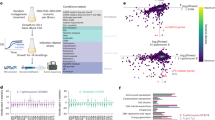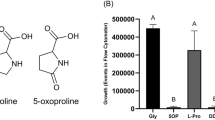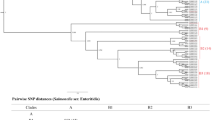Abstract
UNTIL recently, genetical studies with Salmonella typhimurium have been carried out mainly by the transduction method. In an effort to facilitate such studies, we attempted to develop a means of applying conjugation techniques also, using S. typhimurium and Escherichia coli, since Baron and his collaborators1 had been able to produce hybrids between these two bacteria. We have been successful in experiments with a Salmonella culture carrying a mutator gene (mut) and a culture of E. coli strain K-12 carrying the factor for high frequency of recombination (Hfr). The mutator strain was isolated by Miyake2 from strain LT-7. Its main characteristic is a 10- to 100-fold increase in spontaneous mutability.
This is a preview of subscription content, access via your institution
Access options
Subscribe to this journal
Receive 51 print issues and online access
$199.00 per year
only $3.90 per issue
Buy this article
- Purchase on SpringerLink
- Instant access to full article PDF
Prices may be subject to local taxes which are calculated during checkout
Similar content being viewed by others
References
Baron, L. S., Carey, W. F., and Spilman, W. M., Abst. Comm. at Paper Sessions, Seventh Int. Congr. Microbiol. (1958).
Demerec, M., Lahr, E. L., Miyake, T., Goldman, I., Balbinder, E., Banic, S., Hashimoto, K., Glanville, E. V., and Gross, J. D., Carnegie Inst. Wash. Year Book, 57, 390 (1958).
Author information
Authors and Affiliations
Rights and permissions
About this article
Cite this article
MIYAKE, T., DEMEREC, M. Salmonella–Escherichia Hybrids. Nature 183, 1586 (1959). https://doi.org/10.1038/1831586a0
Issue date:
DOI: https://doi.org/10.1038/1831586a0
This article is cited by
-
Transduction with Phage P1 in Salmonella typhimurium
Nature (1968)
-
Episomic control of mutation in Salmonella typhimurium
Heredity (1963)
-
Genetic Studies with Klebsiella pneumoniae
Nature (1961)
-
The properties of an arginine auxotroph ofSalmonella typhimurium
Experientia (1961)
-
Interspecific Hybridization among Mycobacteria
Nature (1960)



